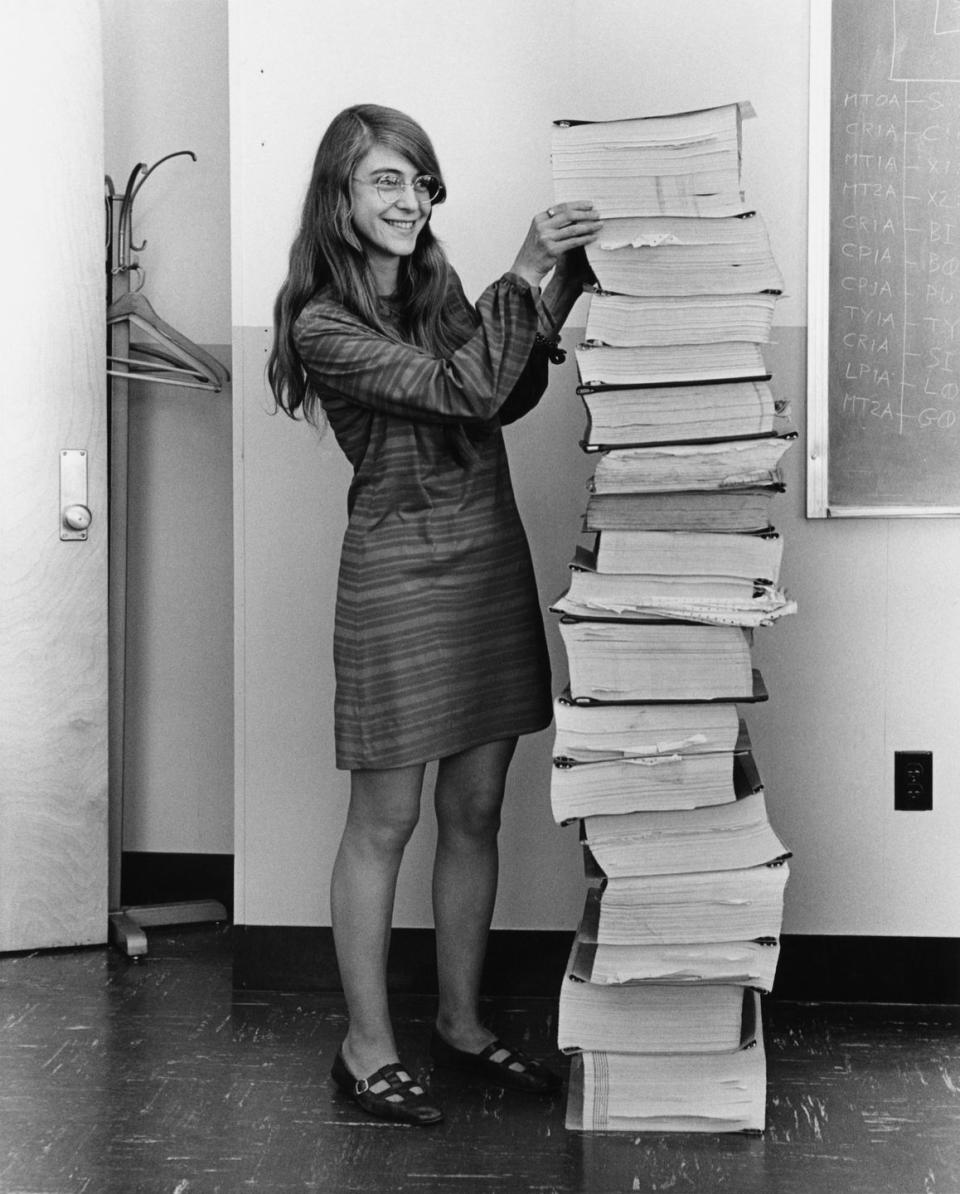Google's Tribute to Apollo's Margaret Hamilton Is Larger Than Central Park

Celebrations in honor of the 50th anniversary of Apollo 11 are rolling in across the world. It's a chance to recognize the achievements of Armstrong, Aldrin, and Collins—as well as many of the lesser known figures who helped make the moon landing possible. And Google is honoring one of them, Margaret Hamilton, with a massive portrait in the Mojave Desert using the light of the moon.
Google's tribute is massive. Taking place at one of the arrays at the Ivanpah Solar Facility, the company has reverse engineered 53,555 solar mirrors, each about the size of a car, to reflect the moon's light, resulting in a 1.4-square-mile portrait of Hamilton, larger than New York’s Central Park.
And she deserves it.
Hamilton was the director of the MIT Instrumentation Laboratory, now known as Draper Labs, in 1969. In that role, starting four years prior, she had led the team that developed the on-board flight software for the first lunar lander, known as the Eagle.
Her work was crucial. As Draper Labs describes in a press release from 2017, it "provided the ability for the on-board flight software to communicate asynchronously in real-time with the astronaut within a distributed system of systems environment."

In real world terms, the Eagle was navigating through space for its final descent on the lunar surface. The Eagle's computer suddenly became overwhelmed. There were demands on its power coming it from all sides. The radar was running with 13 percent of the computer's processing power and the landing system was running with 90 percent.
Running above capacity wasn't an option for Eagle on such a delicate landing. Hamilton's software made the iconic moment possible: she had programmed the software for just such an event, making sure it gave higher priority to more important systems while putting others on the back burner. Hamilton's software decision allowed Armstrong, Aldrin, and Collins to make the crucial decision—go or no-go. They chose go.
Hamilton held herself to the highest possible standards, which was difficult in its own right considering that software engineering wasn't truly a professional field at the time.
"The space mission software had to be man-rated. Not only did it have to work, it had to work the first time," she said in a speech in 2018. "Not only did the software itself have to be ultra-reliable, it needed to be able to perform error detection and recovery in real time. Our languages dared us to make the most subtle of errors. We were on our own to come up with rules for building software. What we learned from the errors was full of surprises."
Hamilton's innovations didn't stop at the Apollo program. Her work was vital to the earliest days of the field, so much so that she actually coined the term "software engineering."
You Might Also Like

